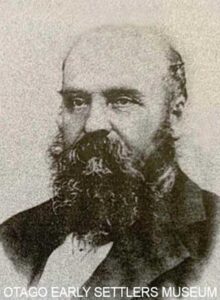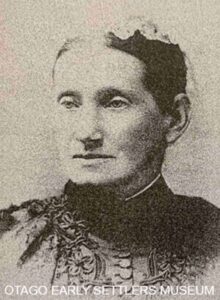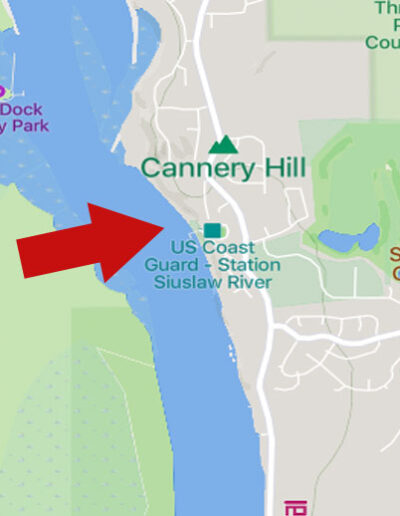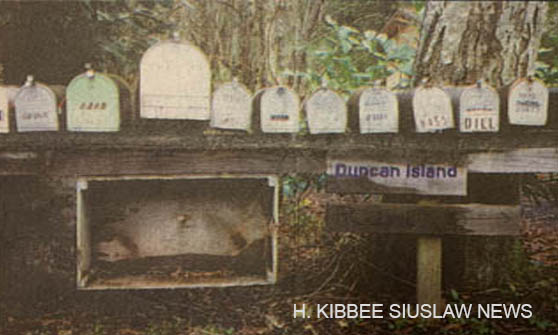 George Duncan was 9 years old and living in Scotland when his father immigrated to Canada and never returned to his family. The year was 1836. To help support their family, George and his younger brother John raised and butchered sheep. Despite such humble beginnings, or perhaps as a result of it, George developed a keen business acumen and went on to experience numerous successes. A turning point in his life occurred upon seeing a posted advertisement from a New Zealand Company. The company offered transportation to a Scottish colony in New Zealand at a reduced fare to attract workers. Viewing it as an opportunity for a new way of life was exactly the opportunity George had hoped for. His brother John and sister Agnes were eager to join him. His mother and youngest brother (James) chose to remain in Scotland.
George Duncan was 9 years old and living in Scotland when his father immigrated to Canada and never returned to his family. The year was 1836. To help support their family, George and his younger brother John raised and butchered sheep. Despite such humble beginnings, or perhaps as a result of it, George developed a keen business acumen and went on to experience numerous successes. A turning point in his life occurred upon seeing a posted advertisement from a New Zealand Company. The company offered transportation to a Scottish colony in New Zealand at a reduced fare to attract workers. Viewing it as an opportunity for a new way of life was exactly the opportunity George had hoped for. His brother John and sister Agnes were eager to join him. His mother and youngest brother (James) chose to remain in Scotland.
 In 1849 at 23 years old, George married his 22-year-old sweetheart Elspeth Wilson, two weeks before departing on the Mooltan, a three-masted sailing ship. That September, the four Duncan’s departed from Glasgow, travelling in steerage. On board were 188 passengers and livestock. They arrived in New Zealand at Port Chalmers, in the city of Dunedin on December 26. During the 106-day trip, 12 people died of cholera and other illnesses.
In 1849 at 23 years old, George married his 22-year-old sweetheart Elspeth Wilson, two weeks before departing on the Mooltan, a three-masted sailing ship. That September, the four Duncan’s departed from Glasgow, travelling in steerage. On board were 188 passengers and livestock. They arrived in New Zealand at Port Chalmers, in the city of Dunedin on December 26. During the 106-day trip, 12 people died of cholera and other illnesses.
LIFE IN NEW ZEALAND
In their new community were 800 others with Scottish ancestry. Using adobe bricks, the Duncan brothers immediately commenced building their home. To earn a living, they sawed lumber by hand and constructed a boat to haul freight and lumber on the river as a business. In 1851 George began a butcher business. He opened the Commercial Inn Hotel in 1857 and within a few years, opened a second inn (the Provincial). He later sold the inns to begin a new business – Duncan’s Flour Mill. The flour won first prize at the 1865 New Zealand Exhibition. With his continued business success, George also established a brewery.
George and Elspeth lived in New Zealand for 25 years. During 17 of those years George either held a position as an elected official or was associated with the city’s government. He eventually became the Provincial Treasurer. Through the years, Elspeth and George had 14 children. Sadly, 3 died in childhood or adolescence.
LIFE IN OREGON
With all his successes and accomplishments in New Zealand, George looked to America for other opportunities. In 1873, he moved with his wife and 7 of their youngest children to San Francisco. Three years later, he travelled to the Siuslaw River (from San Francisco) with machinery to operate a sawmill, and equipment to establish a cannery. He bought and canned salmon the first year and shipped the production to San Francisco to sell.
Confident of this new life in Oregon, George solicited Robert D. Hume in June, 1877 to bring his family from San Francisco to the Siuslaw River on his boat. That month, the Duncan family boarded the Alex Duncan vessel (no relation, named for a lumberman in Sonoma, CA) for the Siuslaw River. It not only was the first ocean steamer to cross the Siuslaw River bar, it was the first time the ship’s captain had even heard of the Siuslaw River! The George Duncan family arrived in Florence with their possessions, livestock and an organ (on permanent display in the Pioneer Museum).
The Duncan’s first house was built at the site of the cannery. According to engineering records, the cannery was located where a present-day ramp leads to the U.S. Coast Guard dock. George ran the cannery from 1878 to 1879 and also operated a small sawmill next to the cannery. An 1883 survey map labels the site as Cannery Hill.
THE CREATION OF DUNCAN ISLAND
Although the island east of Florence is named after George Duncan, there is no evidence he actually lived there. It is however, curious as to how the island came to be.
Throughout the years, various sources referenced the island’s creation. An 1880 General Land Office surveyor map shows a Duncan inlet or slough running parallel to the river. In a 1989 research publication, Ed Pursley states: “Duncan slough was named for the man who operated the first cannery. He owned land on the south side of the river next to the slough”. Long-time Florence resident Dick Smith wrote in 2013 that the slough would have actually been an isthmus at the time. [By definition, “an isthmus is a narrow strip of land connecting two larger areas of land”.] A 2005 Hennesey Project further details the island’s history. It indicates in the early 1900’s, the Siuslaw Boom Company had excavated the upper end of the slough, between the river and south bank, and the isthmus then became an island – Duncan Island. Historically, timber companies used the river to store or float logs down the slough between what was then a long peninsula and the river bank. A channel was dug to connect the slough with the main current upstream. In 1913 dikes were built to prevent the tides and flooding from encroaching and washing away land from the island’s home, farm, and ranch owners. However, island resident Melba Larson wrote numerous articles in subsequent years, citing flooding and dike breaches were on-going issues.
In the early years, those living on the 4-mile-long island received mail service, building, food and medical supplies by boat. A ‘school boat’ transported students to and from school. In 1955 the present-day bridge was completed, connecting the island and the mainland by way of Sweet Creek and Bernhart Roads.
RECENT YEARS
“The best commiunity I ever lived in. It was a nice place to live.” Jan Naylor, 2024
Former island resident Jan Naylor and her husband moved to Duncan Island in 1993, and lived there for 18 years. During that time she describes the island’s residents as a close knit-community. Neighbors were always available to help each other whenever there was a need. She fondly recalls dairy and ranch farms, monthly potlucks, and weekly domino games.
SUMMARY
George Duncan made significant contributions to the early development of commerce in Florence. Establishing a cannery and sawmill in those long ago days were milestone achievements. Throughout the years, he seemed to view each challenge as a stepping stone to greater pursuits. Despite a short life span of 53 years, his ambitions and determination led to a remarkably accomplished life with important, historical impact for Florence.
Story by Deb Lobey, 2024
SOURCES:
Canneries on the Siuslaw. The Siuslaw Pioneer Magazine, 1954, pg 11
Hennessey, Jennifer Taylor. Master of Science Project, Oregon State University.
A Historical Reconstruction and Land Use History of Six Tidal Wetlands in Oregon, March 2005. pg 54-55
Kibbee, H., Siuslaw News. Duncan mailbox image.
Larson, Melba. The Duncan Island Dike History, 2000
McGlashan, John, “Notes from a Promotional Lecture”. John McGlashan Papers. Hocken Library, MS463/2. 1849.
Mooltan Passenger Arrival List at Port Chambers, New Zealand, 1848-1851.
Otago Early Settlers Museum, Dunedin, New Zealand; Elspeth and George Duncan images
Pursley, Ed. A Diamond Set Among the Pearls. Originally published 1989.
Smith, Richard Knox. A Man Named Duncan. 2013 Pacific Publishing.







